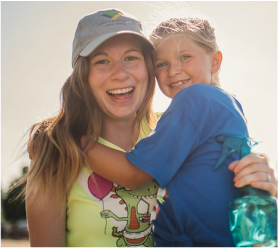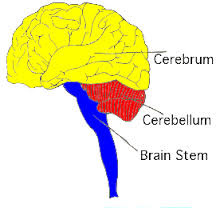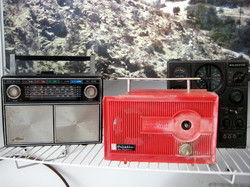
Before I explain my intense disagreement with these folks, let's review their new recommendations. For nearly three decades, the AAP has told us parents to create a "Safe Sleeping" environment which means no fluffy bedding, no crib bumpers, no stuffed toys, no blankets, and a firm mattress with a tight-fighting sheet and NO pillows! Keep cigarette smoke out of the house. And, most importantly, lay babies down on their backs (the "Back to Sleep" campaign). Babies placed on their tummies are most vulnerable to SIDS.
They have recommended not to put baby on a sofa, a cushioned chair either alone or when they are with another person.
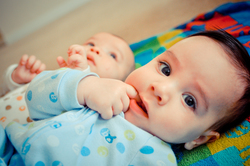
Now, the AAP is saying that you can reduce your baby's risk of SIDS by 50% if you put them to sleep in your room on a "separate sleep surface". It's called "room sharing". They recommend this practice for the first 6 months and ideally, through the first year.
I find this recommendation to be cruel and without scientific evidence, I'm not buying it. I'm a science girl. Convince me with science. We have scientific proof as that SIDS is related to subtle brain problems. Does the AAP really think that allowing your baby to sleep in your room will negate the powerful forces of abnormalities in the brain? Apparently so, but they haven't shared "why" they are convinced that room sharing reduces these deaths.
What is the emotional fall out for those parents whose babies have died of SIDS? They already experience intense guilt over "what else I could have done". Without any explanation whatsoever of "why" keeping your baby in your room reduces the chances of a SIDS death, the AAP made this recommendation. This will likely create a false sense of security.
The death of a baby by SIDS is a quiet death. There is no gurgling or gasping. There are no signs and no suffering. If so, more parents might be able to "rescue" their infant. Also, there is no detection, no treatment and even heart and breathing monitors have not been known to save them. But, parents don't know this. They only know loss. That's it. Some evil force has entered their lives and taken their child. That's what they've told me. And, the phrase, "evil force" is exactly the description they've used.
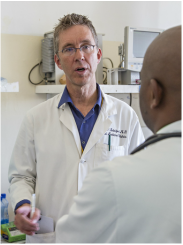
They recommend "tummy time" and at least this recommendation makes sense because this kind of activity increases core strength and encourages all aspects of development.
The AAP recommends a cooler room. Investigation after an unexplained infant death revealed that parents' kept the baby's room warm probably because baby was not allowed to have a blanket and perhaps they were concerned that the pajamas did not offer enough protection from the cold. There was no explanation of "why" a cooler room is a protective factor against SIDS. It is apparently a "correlation" and not a "causation" for now. It is not known "how" warmth may contribute to SIDS, but we only know that babies have died in warm rooms.
Do not swaddle baby. Overheating and constriction can contribute to the occurrence of SIDS. Why is that?
| Mothers, and to a lesser extent, fathers who smoke cigarettes, drink alcohol, and use illicit drugs enhance the risk of SIDS. Marijuana is not considered safe for the pregnant woman and the smoke is unsafe for infants. Before we get into the "science" of SIDS, let me say that the recommendation for nursing your child in bed was just a "gob-smack" moment. |
So, the AAP tells you to have a bare crib. They tell you that the only safe way for your child to be in your bed is with an in-bed sleeper (which from what I can tell from the internet, has "soft" features to it), yet, and let me quote from the article: "If you are feeding your baby and think that there's even the slightest possibility that you may fall asleep, feed your baby on your bed, rather than a sofa or cushioned chair". And yes, this quote is from a female physician who co-authored the paper.
Now, let's take a look at the adult bed. It's got a fitted sheet, a flat sheet a comforter and likely, a comforter cover, head and possibly, body pillows. What part of that says, "Safe sleep environment?" Absolutely nothing. Have these folks not seen the studies regarding bed-sharing/laying aside deaths for infants? Apparently not.
Oh, and she goes on to say, "If you do fall asleep, as soon as you wake up be sure to move the baby to his or her own bed". Picture this. Your baby is slowing down nursing, suggesting they are getting full. You fall asleep and tip your body ever so slightly toward baby with your breast covering their nose and mouth. Exhausted nursing mothers may not realize that they are suffocating their babies. This is NOT a situation that any mother can live with. You know me. What's my favorite question? "Can you live with the consequences?"
Feed your baby in the rocking chair or other kind of chair. They won't be nursing forever. No one said that it was going to be easy. Pay attention to your instincts. Talking to baby, singing to baby, and cooing to baby when nursing is a bonding experience. Take advantage of this time. I was a working nursing mother, so I see myself in these situations. Psychotic-levels of exhaustion may make you think you can take a shortcut. No.
Male babies, African-American babies, premature babies, overweight babies, babies with mild infections and babies under 4 months of age are most vulnerable to SIDS. This is "empirical" evidence meaning that it is just collected data from the incidences.
Data collected on autopsy tells us that two serious factors are operating in those babies who die by SIDS.
These brain stem issues cause baby to re-breathe their exhaled air, essentially increasing carbon dioxide. When this happens, they may experience an irregular heart beat. When their oxygen gets low, they do not "auto-resuscitate" by gasping and "restarting" their breathing. They truly pass away in their sleep.
As well, the brain stem has deficits with using and recycling serotonin. Most of us know serotonin in its relationship to depression. Reduced serotonin leads to depressive symptoms and many antidepressants make serotonin more available for us and subsequently, depression is eased. Serotonin has important roles other than regulating mood including helping brain cells to communicate with one another, regulating breathing and blood pressure.
1. There is an underlying brain stem abnormality
2. The baby is in a critical developmental period
3. There is an extrinsic and/or intrinsic factor that sets up the cascading effect resulting in death
The critical developmental period referenced includes the first 4 months of life when there are rapid changes in the sleep-wake cycle and there are rapid changes in cardiac (heart) functioning. Everything is in flux.
Extrinsic factors are those that can be controlled such as putting baby on their back, creating a safe sleep environment and being in a cooler room.
Intrinsic factors include being African-American, male, premature and having even a mild infection.
I have a friend who is part of an appointed team of attorneys who sue on behalf of air crash victims. He explained to me that the "theoretical model" of air crashes is such that on any given day, out of the suspected 10 problems that have to occur to bring down a jet, 7 or 8 or 9 happen in a given flight. It is only when 10 things happen in sequence or unison that tragedy strikes. I feel this comparison is appropriate for the SIDS deaths.
The bottom line is that only so much can be done. These situations are the cruelest "roll of the dice".
As parents, we can only do our best to stay healthy during pregnancy and after delivery, be aware of both the dangers and protective factors that influence the occurrence of SIDS and leave the rest of it to the angels.
Just do the best you can, Claudia

